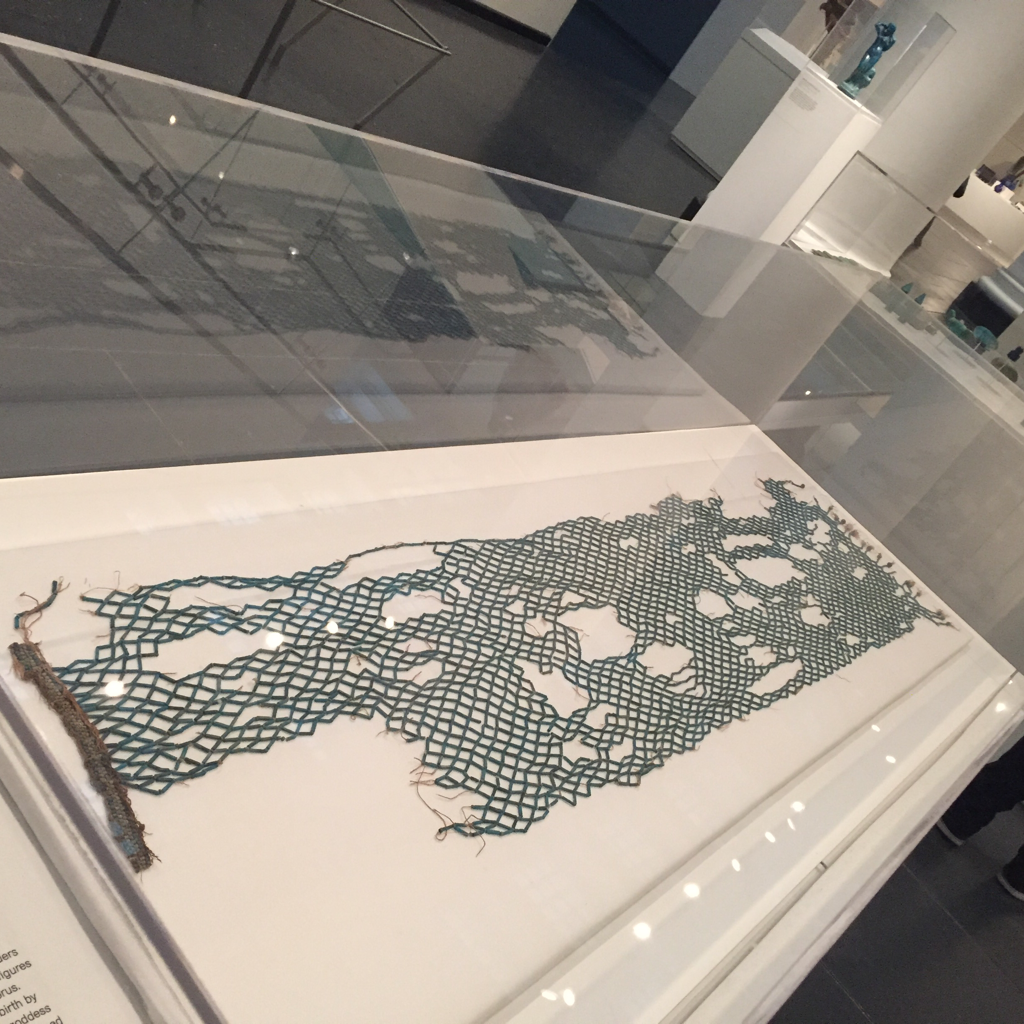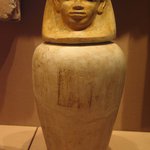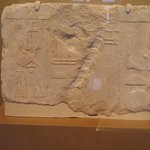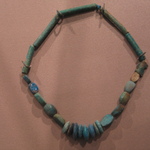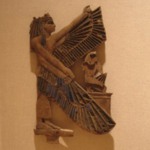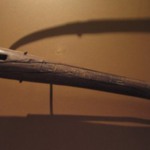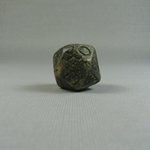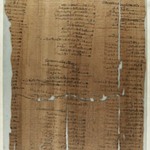
Beaded Netting for a Mummy
Egyptian, Classical, Ancient Near Eastern Art
Attached to a linen shroud, this type of bead net covered the mummy from just below the shoulders to the feet. It was once adorned with faience figures of a winged scarab and the Four Sons of Horus. Blue bead nets were believed to assure rebirth by linking the deceased to Osiris and the sky goddess Nut. These gods were often depicted wearing bead net garments that were in fashion during the Old Kingdom, almost two millennia earlier.
MEDIUM
Faience
DATES
760–656 B.C.E.
DYNASTY
Dynasty 25
PERIOD
Late Period
DIMENSIONS
13 x 1/4 x 59 1/16 in. (33 x 0.7 x 150 cm) (show scale)



COLLECTIONS
Egyptian, Classical, Ancient Near Eastern Art
ACCESSION NUMBER
37.1814E
CREDIT LINE
Charles Edwin Wilbour Fund
CATALOGUE DESCRIPTION
Long rectangular network of faience beads from a mummy. The major portion of the net is made of two types of blue glazed faience beads: short cylindrical beads and long cylindrical beads. They are strung in a pattern of lozenges.
In a few cases there are two small beads at the intersection of four long beads. The cord (string) is made from two strands twisted together. On one of the short ends of the net, and one part of the bottom edge adjacent to this end there is preserved the original fringe of the net. This consisted of an extension, from every other intersection of two long cylindrical beads and of three long beads.
At the opposite end of the net is preserved part of a different type of border decoration. This is a border formed by stringing, close together, of blue, tan, and white beads.
Condition: Many beads missing and much of original string gone.
EXHIBITIONS
MUSEUM LOCATION
This item is not on view
CAPTION
Beaded Netting for a Mummy, 760–656 B.C.E. Faience, 13 x 1/4 x 59 1/16 in. (33 x 0.7 x 150 cm). Brooklyn Museum, Charles Edwin Wilbour Fund, 37.1814E. Creative Commons-BY (Photo: Brooklyn Museum, 37.1814E_PS9.jpg)
IMAGE
overall, 37.1814E_PS9.jpg. Brooklyn Museum photograph, 2015
"CUR" at the beginning of an image file name means that the image was created by a curatorial staff member. These study images may be digital point-and-shoot photographs, when we don\'t yet have high-quality studio photography, or they may be scans of older negatives, slides, or photographic prints, providing historical documentation of the object.
RIGHTS STATEMENT
Creative Commons-BY
You may download and use Brooklyn Museum images of this three-dimensional work in accordance with a Creative Commons license. Fair use, as understood under the United States Copyright Act, may also apply.
Please include caption information from this page and credit the Brooklyn Museum. If you need a high resolution file, please fill out our online application form (charges apply).
For further information about copyright, we recommend resources at the United States Library of Congress, Cornell University, Copyright and Cultural Institutions: Guidelines for U.S. Libraries, Archives, and Museums, and Copyright Watch.
For more information about the Museum's rights project, including how rights types are assigned, please see our blog posts on copyright.
If you have any information regarding this work and rights to it, please contact copyright@brooklynmuseum.org.
RECORD COMPLETENESS
Not every record you will find here is complete. More information is available for some works than for others, and some entries have been updated more recently. Records are frequently reviewed and revised, and we welcome any additional information you might have.









